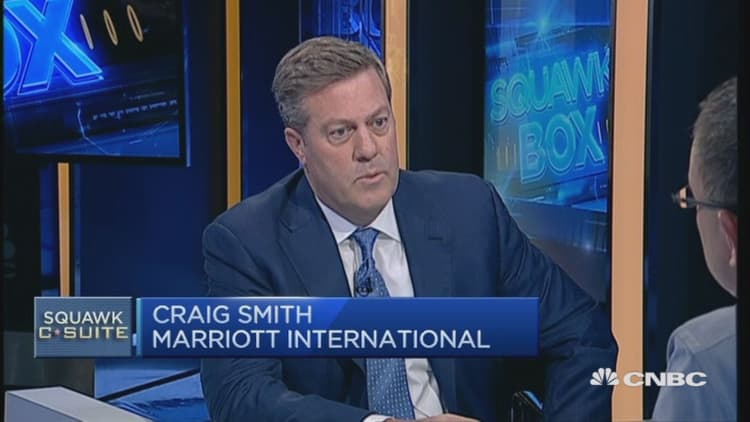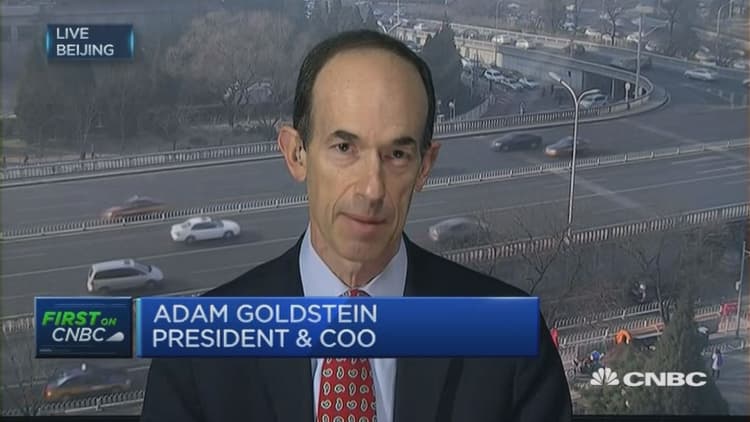


Markets are fretting about China's economic health but it appears Chinese holidaymakers don't share the same concern about their own finances. And some brands are benefiting big-time.
According to the China National Tourism Association, 120 million Chinese traveled abroad in 2015, up about 20 per cent from 2014. They are venturing further away from the mainland and they are spending freely, splashing $165 billion overseas in 2014, according to the latest data from the United Nations World Tourism Organization.
Much of this goes on retail purchases, a recent study released by Euromonitor revealed; in France, Chinese tourists spend as much 40 percent of their holiday budget on shopping.
They are not shy of pricey purchases, according to an October 2015 report by consultancy Bain. Despite a slowing local economy, Chinese consumers remained the largest group of buyers of luxury goods, accounting for 31 percent of global purchases.
"Undoubtedly, Chinese consumers play a primary role in the growth of luxury spending worldwide," Federica Levato, principal at Bain and co-author of the study, said.
"High street" brands also remain popular but retailers don't benefit equally, other research found, with some unexpected brands carrying particular cache with mainland buyers.
Luxury and local brands
Sales at Prada and its counterparts in Asia may have been hurt by the double-whammy of an austerity drive and graft crackdown in China, but luxury shopping is still top of the shopping list when Chinese travel to France and the U.S., Euromonitor wrote.
Chinese shoppers also head for popular local brands, depending on their destination.
In Singapore, local fashion label Charles & Keith is a popular choice, as is cosmetics retailer Sa Sa in Hong Kong, Fast Retailing's Uniqlo in Japan and handbag-maker Coach in the U.S., according to Singapore-based digital data firm 6Estates, which analysed data from nearly 300,000 conversations on Chinese social platforms and travel websites in the fourth quarter of 2015 in order to discern which brands were the most favored.
More unexpectedly, not-so-fashionable synthetic footwear retailer, Crocs, is a winner with Chinese tourists in Singapore.
And purchases aren't limited to apparel and make-up.
"Singapore was [also] the only country where food was a hot topic among travelers, with local barbecued pork delicacy brand Bee Cheng Hiang among the top brands Chinese travelers talked about," said 6Estates chief executive Gary Chin.
Beauty products
Chinese tourists have resumed traveling to South Korea in droves now that last year's MERS scare has passed (numbers dropped about 2.3 percent in 2015, according to Reuters, but are expected by brokerage CLSA to jump by 28 percent in 2016). This travel is driven in part by the popularity of Korean pop culture, ranging from soap operas and to food, in China as the cultural exports spur tourism and spending on featured products.
Beauty brands are likely to get a boost from the inflow, with producers AmorePacific and LG Household & Healthcare the biggest beneficiaries, said HSBC in a note last week. Some of the preferred brands include AmorePacific's Sulwhasoo and LG H&H's Whoo.
"I use my mobile phone to research what products to buy in South Korea," 20-year-old Chinese tourist Liu Yuting told Reuters recently. "Many Chinese girls like South Korean products, because most of them are cheap and cute."
Health supplements and baby goods.
Food safety concerns reign in China, which means that health supplements to milk powder and infant care products top the shopping lists of Chinese visiting Japan and Australia.
"Japanese consumer health products are seen as much safer compared to similar products that are made in China and as such, tourists want to bring back as many OTC [over-the-counter] products as they can due to the smaller size for transportation and the longer shelf-life," wrote Euromonitor's research manager Jared Conway in Tokyo.
In a measure of the strength of the phenomenon, two years ago a popular Chinese blogger recommended 12 Japanese consumer health products that tourists should target. The well-circulated list led to a dramatic growth in sales of the featured products including eye drops, cooling patches and a painkiller.
Sales of baby products such as a diapers are also enjoying brisk sales even in ageing Japan, thanks to Chinese buyers.
In Australia, Chinese visitors who bulk-buy milk powder helped prompt the A2 Milk Company and Bellamy's Australia to increase production to keep pace with rising demand, noted Euromonitor.
Chinese taste for Australian powdered milk is so strong that supermarket chains Coles and Woolworths last year introduced a four-tins-per-person limit on the power to prevent profiteers from buying in bulk in order to re-sell on the grey market in China.
Australian supplement makers Swisse Wellness and Blackmores are also popular picks with middle-class Chinese consumers, wrote Euromonitor analysts in Sydney; so popular that in 2015 China's Biostime acquired Swisse Wellness for 1.67 billion Australian dollars ($1.21 billion), outbidding two other Chinese firms.
Down jackets
Tropical Singapore may seem the most unlikely place to sell 1,000-euro ($1,111) down jackets but Franco-Italian lifestyle company Moncler operates a popular shop in the city-state, and is a key port of call for many Chinese tourists.
Moncler is also pulling in the tourist dollars from China at its outlets in Japan and Europe, chief executive Remo Ruffini said at the brand's new boutique in Tokyo last year, according to a report by Women's Wear Daily.
Ccorrection: This report has been updated to reflect that Crocs are made from a synthetic. Biostime acquired Swisse Wellness for 1.67 billion Australian dollars ($1.21 billion). An earlier version misstated the amount.

